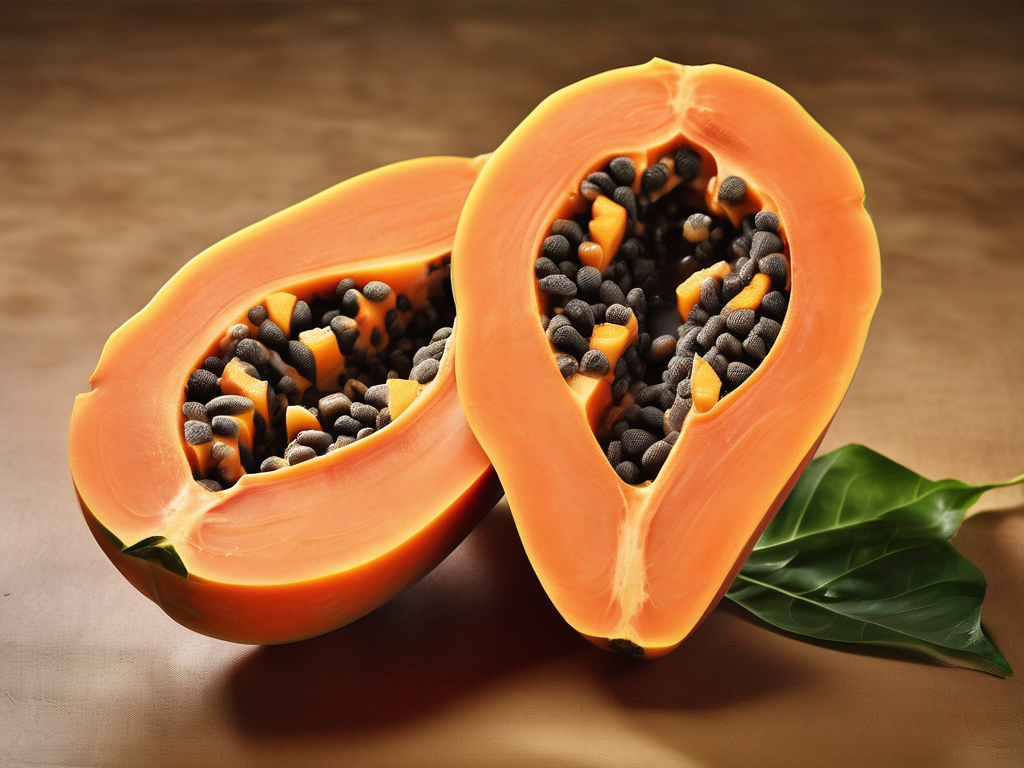
Is it Necessary to Refrigerate Papaya for Optimal Freshness?
Get Your Free Food Safety Cheat Sheet
30 most common foods with instant answers. Print it and stick it on your fridge—completely free!
Is it Necessary to Refrigerate Papaya for Optimal Freshness?
Papaya is a delicious and nutritious tropical fruit enjoyed by many around the world. Its vibrant color, sweet flavor, and numerous health benefits make it a popular choice for both snacking and adding to dishes. But when it comes to storing papaya, many people wonder whether it needs to be refrigerated to maintain its freshness. In this blog post, we will delve into the best practices for storing papaya to ensure it stays fresh and safe to eat. (Papaya)
The Optimal Storage Conditions for Papaya
Refrigeration vs. Room Temperature
- Room Temperature: Papayas can be stored at room temperature, especially if they are not fully ripe. Placing unripe papayas in a paper bag can help speed up the ripening process.
- Refrigeration: Once ripe, papayas can be stored in the refrigerator to slow down the ripening process and extend their shelf life.
Ideal Temperature and Humidity Levels
- Temperature: The ideal temperature for storing ripe papayas in the refrigerator is around 50°F (10°C).
- Humidity: Papayas prefer a slightly humid environment, so storing them in a perforated plastic bag can help retain moisture without causing them to become soggy.
Avoiding Exposure to Ethylene Gas
- Ethylene Sensitivity: Papayas are sensitive to ethylene gas, which is produced by certain fruits like apples and bananas. Exposure to ethylene can cause papayas to ripen too quickly and spoil.
- Separation: To prevent premature ripening, store papayas away from ethylene-producing fruits and vegetables.
Tips for Storing Papaya Safely
Selecting Ripe Papayas
- Color and Texture: Choose papayas that are mostly yellow with a slight orange hue. They should yield slightly to gentle pressure when ripe.
- Smell: Ripe papayas have a sweet, tropical aroma. Avoid papayas with a strong or fermented smell.
Preparing Papayas for Storage
- Washing: Before storing papayas, wash them thoroughly under running water to remove any dirt or contaminants on the skin.
- Drying: Pat the papayas dry with a clean cloth or paper towel to remove excess moisture that can promote mold growth.
Storing Cut Papaya
- Refrigeration: If you have cut papaya, store it in an airtight container in the refrigerator for up to 3 days.
- Covering: To prevent the cut surface from drying out, cover it with plastic wrap or place it in a sealed container.
Safety Precautions for Handling Papaya
Preventing Cross-Contamination
- Cutting Boards and Utensils: Use separate cutting boards and utensils for preparing papayas to avoid cross-contamination with other foods.
- Cleaning Surfaces: Clean and sanitize cutting boards, knives, and countertops after handling papayas to prevent the spread of bacteria.
Checking for Spoilage
- Mold: Discard papayas that show signs of mold growth, especially around the stem or soft spots on the fruit.
- Off Odors: If papayas have a sour or off-putting odor, they may be spoiled and should be discarded.
Safe Consumption Practices
- Thorough Washing: Before consuming papaya, wash the skin thoroughly under running water to remove any dirt or bacteria.
- Peeling: If you prefer, you can peel the skin off papaya before eating to reduce the risk of contamination.
Conclusion
In conclusion, while papayas can be stored at room temperature when unripe, refrigeration is recommended once they are ripe to extend their shelf life. By following the tips and safety precautions outlined in this blog post, you can ensure that your papayas remain fresh, safe to eat, and free from contamination. Whether you enjoy papaya on its own or as part of a dish, proper storage practices will help you make the most of this delicious tropical fruit.
For more information on papaya and other food safety topics, visit our main papaya page. Stay informed, stay safe, and enjoy your papayas! (Papaya)
Related Posts
Here are some other articles you might find helpful:
Authoritative Food Safety References
These agencies and university labs inform every tip and health precaution we publish.
USDA FoodKeeper – Cold Storage Guidelines
Official refrigerator, freezer, and pantry timelines maintained by the U.S. Department of Agriculture.
Visit USDA FoodKeeperFDA Produce Safety Rule & Grower Guidance
Field-to-fridge handling practices that prevent contamination of fruits, vegetables, and leafy greens.
Visit FDA Produce SafetyCDC Foodborne Illness Prevention Hub
Surveillance-backed guidance on pathogens, symptoms, and steps to reduce foodborne illness risk.
Visit CDC Food SafetyUC Davis Postharvest Technology Center
University research detailing optimal storage atmospheres for produce after harvest.
Visit UC Davis PostharvestPenn State Extension – Home Food Preservation & Safety
Peer-reviewed extension bulletins on safe canning, chilling, and reheating practices.
Visit Penn State ExtensionGet Your Free Food Safety Cheat Sheet
30 most common foods with instant answers. Print it and stick it on your fridge—completely free! Want more? Upgrade to the complete guide with 70+ foods.
Scan your food directly and get instant safety info using our AI-powered camera feature.